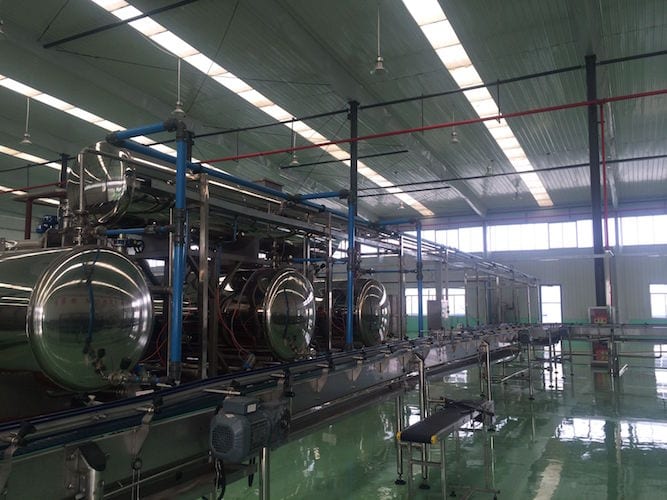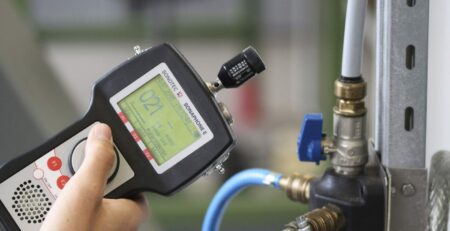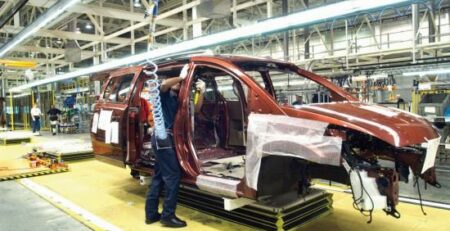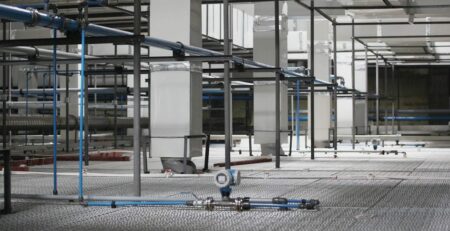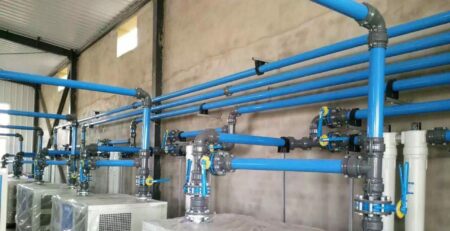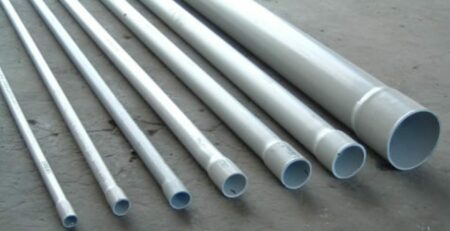Three Types of Food-Industry Compressed Air Systems
Food-Industry Compressed Air Systems are pivotal to the success of operations, however, determining which system is right for you just requires a quick explanation.
System #1: Contact
“Contact” is defined in the code as, “the process where compressed air is used as a part of the production and processing including packaging and transportation of safe food production.” Another way of defining this is simply if compressed air comes into direct contact with food products. If this is the case, the end user must know that the compressed air must be purified to the “Contact” purity-level as defined in the Code. We often hear the term “incidental contact” used in the U.S. This is an ambiguous term. It is recommended that engineers clearly define between “Contact” and “Non-Contact”.
Here is a application example of compressed air coming into “Contact” with food. Vegetable peeling machines utilize compressed air to prepare raw food stocks for packaging and consumption. The vegetable peelers use a jet nozzle of air to peel onions and other vegetables.⁴
In this type of “Contact System”, The U.K. Code of Practice recommends a -40 F (-40 C) pressure dewpoint which will ensure that no microorganisms can grow. This can be accomplished with desiccant (adsorption) type compressed air dryers located in the compressor room (centralized air treatment). Each facility will have to determine if further point-of-use air dryers (de-centralized) are required to ensure the dewpoint specifications. Point-of-use air dryers may be of either desiccant (adsorption) or membrane-type technology.
Coalescing filters are required to remove solid particulates and total oil (aerosol + vapor) to the specification levels. Please note that activated carbon filters will be required as well to remove oil vapors. As with the air dryers, each facility will have to determine if de-centralized filtration is required in addition the the centralized filtration.
System #2: Non-Contact High-Risk
Non-Contact is defined in the code as, “the process where compressed air is exhausted into the local atmosphere of the food preparation, production, processing, packaging or storage.” Within this section we have a High-Risk and Low-Risk distinction. A Non-Contact High-Risk situation may be where compressed air is used in a blow-molding process to create a package – and then product is introduced into the package later in the day. Many food processors and have their own in-house production lines to create their own packaging. Without proper air treatment, it is possible that oil, moisture, and particulates (notably bacteria) could be present on the packaging – waiting for the food product!
System #3: Non-Contact Low-Risk
In “Non-Contact Low-Risk” systems, The U.K. Code of Practice recommends a +37 F (+3 C) pressure dewpoint. This can be accomplished with refrigerated type compressed air dryers located in the compressor room (centralized air treatment). Each facility will have to determine if further point-of-use air dryers (de-centralized) are required to ensure the dewpoint specification.
Defining a Non-Contact Low-Risk system is equally important to define because it is common to see food industry systems “over-protect” their compressed air systems. Most plants have significant portions (over 50%) of their compressed air going to “plant air” applications. These “plant air” applications will have absolutely no contact with food products or food-packaging machinery. It is important to understand this relationship and design your system accordingly. We often see desiccant air dryers used to dry all the compressed air in the facility to a -40 F (-40 C) dewpoint – when only 40% of the compressed air needs this dewpoint.
It is worth noting that refrigerated type compressed air dryers normally have significantly lower associated energy costs than desiccant air dryers. Desiccant air dryers will use a portion (can be 15%) of the compressed air to regenerate the desiccant bed and/or use electric heaters. Refrigerated dryers use relatively small refrigeration compressors and can be cycling or non-cycling.
Coalescing filters are required to remove solid particulates and total oil (aerosol + vapor) to the same specification levels as “Contact” systems. Please note that activated carbon filters will be required as well to remove oil vapors. As with the air dryers, each facility will have to determine if de-centralized filtration is required in addition the the centralized filtration.
Conclusion
Compressed air efficiently supports the food industry as long as care is taken to remove contaminants from the system. Food industry professionals should define how compressed air is used in their facility and define a specification for compressed air purity based upon the three system types defined by the U.K. Code of Practice for Food-Grade Air.

